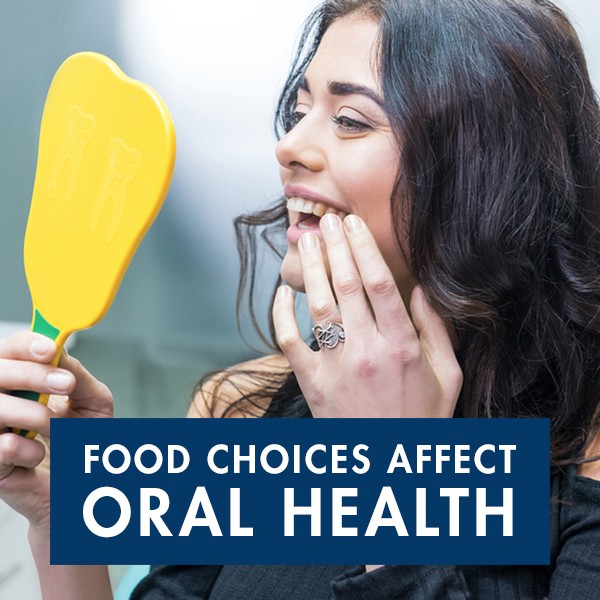If you hate flossing, you’re not alone. In fact, only 32% of Americans floss every day, and 1/3 of Americans don’t floss at all! Though it’s comforting to know you’re not alone, this shouldn’t serve as an excuse to skip flossing. The choice not to floss comes with a whole slew of health complications. Considering the stats on flossing in America, it’s no surprise that 47.2% of adults over 30 have some form of periodontal disease.
If you’re wondering if you can skip flossing, the short answer is no. There are many reasons to floss, and there are also plenty of ways to make flossing easier and more enjoyable. Read along to learn more!
What Happens if You Don’t Floss?
Maybe you’ve gone most of your life without flossing and nothing bad has happened (yet). So, why should you start flossing now? Even if you’ve yet to feel the effects of not flossing, that won’t last forever. Flossing helps to ward off a number of dental and health problems, so neglecting this important task can have serious consequences. Let’s talk about some of them.
Plaque and Tartar
Plaque and tartar buildup is one of the first effects of neglecting to floss. Plaque is a sticky, bacteria-filled substance that forms on your teeth after you eat, feeding on any leftover food residue in your mouth. As plaque feeds on leftover food, it releases an acid that eats away at your teeth, eventually causing cavities. Luckily, you can get rid of plaque on your own by practicing good oral hygiene. Proper tooth brushing can help to remove plaque from the front, back and top of teeth. However, your toothbrush can’t reach between your teeth to clean their sides – only flossing can do that – and neglecting these areas can lead to plaque buildup. If left unchecked, plaque will harden into tartar, which can lead to gum disease and can only be removed by a dentist.
Gum Disease
Tartar, when left untreated, builds up along the gumline, causing gingivitis. Gingivitis is a form of gum disease characterized by painful, inflamed gums and can be treated with the help of a dentist and good at-home care. Left untreated, pockets will form in the gumline, filling with food debris, bacteria, plaque and more tartar. At this point, gingivitis has advanced into periodontal disease, a more severe form of gum disease that is much harder to treat. Periodontal disease often leads to tooth loss and other consequences. Failing to floss starts the ball rolling toward this undesirable outcome.
Other Health Issues
Neglecting to floss allows for bacteria to linger in the mouth, and this leaves one vulnerable to infection-causing pathogens. For instance, gaping abscesses may form in the mouth, and they may be resistant to healing. In many ways, the mouth is an important entryway into the rest of the body, so infections and diseases of the mouth may spread to other areas. For instance, bacteria and inflammation increases the likelihood of heart disease and rheumatoid arthritis, and it may make pre-existing conditions harder to treat. People with diabetes experience difficulties with their immune system and wound healing, making it harder to recover from gum disease.
Let’s Demystify Flossing
When you fail to floss, it’s not a question of if, but rather when, you’ll face consequences like the ones mentioned above. Consider the financial, emotional and physical burdens of the decision not to floss. Medical and dental treatment can be a significant financial drain, the effects of tooth pain and loss can affect your mental health and restorative surgeries may require a long and strenuous recovery process. These are scary things to consider, but we believe that action and knowledge cure fear. We want to empower you to take action toward a healthier future by giving you the knowledge and tools to do so. By the time you’re done reading, flossing will hopefully feel less like a daunting task and more like an exciting opportunity.
The Options
There are so many options to customize your flossing experience to your preferences. When you think about floss, you likely picture a little container of thin, white string. What if we told you that’s not your only option (though it is still a good one)? Let’s talk about the different types of floss out there.
Unwaxed Floss
Remember the basic, white string floss we just talked about? This is it. Unwaxed floss is thin and made of a nylon material that can fit easily between tight spaces between your teeth. This is great for people who have smaller gaps between their teeth, but it is vulnerable to shredding and breaking. Be gentle!
Waxed Floss
Unwaxed floss’s sturdier sister, waxed floss is more resistant to tearing and breaking. It’s made of the same nylon material with a thin, protective coating of wax. Though waxed floss is less resistant to breakage, it is also thicker than its unwaxed counterpart, so it’s best for people with some room between their teeth.
Dental Tape
Maybe you have some extra space between your teeth. Traditional floss may be too thin to meet your needs. Dental tape is broader and flatter than standard floss, making it ideal for those who need something thicker to get the most out of their flossing experience. Because it is a bit thicker, it is also gentler on the gums, and it comes in waxed and unwaxed versions. However, if you have less space between your teeth, you may want to opt for another type of floss.
Polytetrafluorethylene Floss (PTFE)
This floss is the best of both worlds. Made of the same material used in high-tech Gore-Tex fabric, it has the thinness of unwaxed floss and the durability of waxed floss. Though this floss is adaptable, perfluorooctanoic, a carcinogen, is involved in its production. Therefore, though dentists may suggest this floss for short-term use, long-term use could compromise the immune system and is not recommended.
Electric Flossers
It can sometimes be hard to manipulate traditional floss – though it is possible with practice – so some may opt for an electric flosser. These flossers have ergonomic handles and angled heads that make it easier to manipulate and reach back teeth in the mouth, and they include a sturdy, nylon material that vibrates between the teeth. They also have the added benefit of promoting oral health by stimulating the gums. However, be careful not to overstimulate the gumline, as this can change the shape of your tissue, and don’t use this type of flosser if you have an unsteady grip.
Natural and Biodegradable Floss
Maybe you want to practice good oral hygiene, but you’re worried about the environmental costs of good oral health. We’ve got good news for you. There are many brands out there that make floss out of silk, which is biodegradable and won’t sit in a landfill for years.
Water Flossers
Water flossers are another eco-friendly option that is great for anybody who has dental work, like braces, that makes using traditional floss difficult. These flossers use high-pressure water, which shoots out in a thin stream and cleans between your teeth. Though this is a great option, be warned; it comes with a high price tag, and if you travel often, it’s not the most portable option.
Making Flossing Easy
For some, flossing is a foreign concept. Flossing isn’t an intuitive skill, so if you’ve never been taught how to do it, it can be daunting. Follow these easy steps to get it right every time!
Step 1: Break a good-size piece of floss off (about a foot and a half should do). First, wind the floss around the middle finger of your left hand, and then around the middle finger of your right hand, leaving a few inches of taught floss between each hand.
Step 2: Holding the remaining floss between your thumbs and forefingers, use a gentle back-and-forth motion to ease the floss between your teeth, making sure not to hurt your gums by moving too quickly.
Step 3: Once you’ve (gently) reached the gum line, curve it around one tooth and gently slide it between the gum and tooth, gently rubbing the side of the tooth in an up-and-down motion.
Step 4: Repeat this step for both sides of all of your teeth, making sure to remember the back side of the last teeth in each arch.
Step 5: Throw away your used floss. Refrain from reusing, as this can cause leftover bacteria to get into your mouth the next time you floss.
Still Have Questions…?
If you’ve still got questions or concerns about how to start flossing, you’ve got options! Our team at San Antonio Periodontics & Implants are the experts on all things gum-related, and that includes how best to care for them! Give us a call at 210.824.0111 to ask any questions. And if you’ve already begun to experience the consequences of lack of flossing, visit our website to learn about your options and to schedule an appointment with our expert dental team!
Visit Our Office
San Antonio, TX
4501 McCullough Suite 104, San Antonio, TX 78212
Email: steven_maller@yahoo.com
Book NowOffice Hours
- MON - THU8:00 am - 4:00 pm
- FRI8:00 am - 12:00 pm
- SAT - SUNClosed








